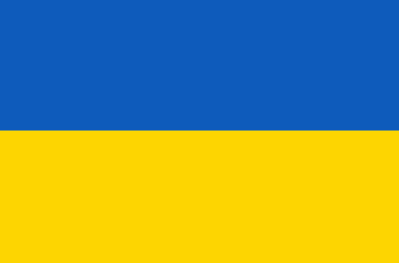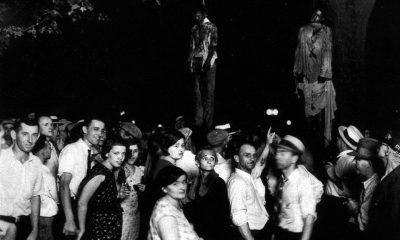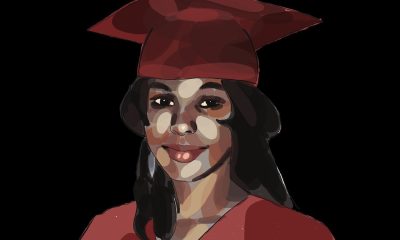Ukraine
Ukraine


Ukraine is one of the countries that make up Eastern Europe; it has borders with Russia, Belarus, Poland, Slovakia, Hungary, Romania, and Moldova. The country’s history is deep and varied, stretching back to prehistoric times. Ukraine has a rich and varied history, spanning from the establishment of Kyivan Rus through the country’s recent fight for independence.
Ukrainian Origins and History
Scythians, a nomadic group that inhabited the area from the seventh to the third century BCE, left a mark on early Ukrainian history. The Scythians were renowned for their mastery of the horse and their sophisticated metallurgy. Kyivan Rus was a confederation of Slavic tribes that emerged in the 9th century and grew to become a great empire.
Those of Kievan Rus
The Kyivan Rus was founded by a group of Vikings called the Varangians in the late 9th century. The city of Kyiv served as the capital of the Kyivan Rus, which grew to become a dominant state in the area. Kyivan Rus art, literature, and architecture were renowned for their sophistication.
Prince Vladimir I, who led the Kyivan Rus to Christendom in the year 988, is often regarded as one of the most pivotal leaders in Kyivan Rus history. An important turning point in Ukrainian history, the adoption of Christianity integrated Kyivan Rus into the Byzantine cultural realm.
Cossack expansion after the Mongol invasion
The Mongols’ 13th century invasion of Kyivan Rus was devastating. Much of the region’s infrastructure was destroyed. The Mongol invasion caused Kyivan Rus to break up into several independent republics and principalities.
Cossacks were a major political and military power in Ukraine during this period. The Cossacks were a hardy band of fighters who made their home in the southern parts of the country. The political and military importance of the Cossacks in the region grew steadily throughout the succeeding centuries.
Commonwealth of Poland and Lithuania and the Hetmanate
Ukraine was an integral element of the Polish-Lithuanian Commonwealth, a mighty kingdom that dominated most of Eastern Europe in the 16th and 17th centuries. At the time, the Ukrainian territory was split in two: the western part was ruled by Poland, while the eastern part was ruled by the Hetmanate, a Cossack state allied with the Polish-Lithuanian Commonwealth.
A military chief, or hetman, oversaw the affairs of the Hetmanate, a semi-independent state. The military might of the Hetmanate was matched only by the depth of its literary, musical, and artistic traditions.
Imperial Russia and Soviet Times
Ukraine joined the Russian Empire in the late 18th century. Many Ukrainians were coerced or otherwise pressured to adapt into Russian culture during this period, which led to the suppression of the Ukrainian language and culture. Ukraine was a major theater of the Russian Revolution in the early 20th century, leading to the country’s incorporation into the Soviet Union.
Ukraine’s economy and society saw major shifts during the Soviet era. Many Ukrainians were coerced into working in factories and other industrial companies as the agricultural sector was collectivized. Human rights violations and political persecution were also pervasive throughout the Soviet era.
Freedom and the Present Day
After years of Soviet rule, Ukraine finally broke away in 1991. Political, economic, and social turmoil were all hallmarks of the country’s democratic transition.
Racial discrimination in Ukraine has a long and complicated history that is rarely discussed. Racism, which may be loosely defined as any type of discrimination or prejudice towards a group of people because of their race or ethnicity, has been a part of Ukrainian society for generations.
Racism in Ukraine: A Brief Origin Story
Ukraine’s early history was defined by the intricate interaction of several cultural traditions. Kievan Rus, the ancestor of modern-day Ukraine, was a powerful empire from the 9th to the 13th century that contained a wide variety of peoples, including Slavs, Varangians, Finns, and Turks.
It was typical for individuals of diverse races and cultures to coexist peacefully throughout this time period, and there was widespread intermarriage between these groups. But when the Mongol Empire expanded into the area in the 13th century, the balance of power and the composition of the local population began to change.
The majority Slav population in Kievan Rus was persecuted by the Mongols because they were not interested in developing a cosmopolitan society. The Grand Duchy of Lithuania, which covered much of modern-day Ukraine, stepped in to fill the power vacuum left by the Mongol invasion.
The Lithuanians were the most accepting of the locals, and they promoted harmonious coexistence amongst people of diverse backgrounds. However, as the Polish population grew and the Grand Duchy of Lithuania expanded, the region took on a more Polish identity.
Anti-Semitism in Soviet Russia
Ukraine was swept up in the political and social turmoil that swept over Europe in the 20th century, making it a difficult century for the country. Ukraine declared its independence from Russia in 1917, but its freedom was short-lived as the country was immediately annexed by the Soviet Union.
Racism, especially towards the Jewish community, flourished throughout Soviet-era Ukraine. The Soviet authorities persecuted Jewish intellectuals, artists, and merchants during the 1920s and 1930s on the grounds that they were “bourgeois nationalists” and enemies of the state.
Tens of thousands of Jews were killed or transported to labor camps as a result of this campaign, which reached its zenith in the Stalinist purges of the late 1930s. The “new Soviet man,” as envisioned by the Soviet authorities, was someone without racial or national biases.
In practice, however, the Soviet administration utilized this ideal to justify its own discriminatory actions, especially those directed towards the Muslim minority of Ukraine. The Soviet authorities strongly prohibited the practice of Islam and forced the relocation or suppression of numerous Muslim communities in Ukraine during the Stalinist era.
The Problem of Racism in Modern Ukraine
Ukrainians, Russians, Jews, Roma, and members of other minority groups all coexist in modern-day Ukraine. Nonetheless, racism and other forms of discrimination continue to be serious issues, especially for people of color and other social outcasts.
The development of far-right nationalist parties in Ukraine is a prominent example of racism there. These groups frequently express anti-Semitic and anti-immigrant beliefs. This includes the Euromaidan demonstrations in 2014, which led to the overthrow of President Viktor Yanukovych, and other violent episodes.
In addition to the emergence of far-right nationalism, prejudice towards Ukraine’s Roma community has been a major problem for the country. Violence, harassment, and discrimination are common experiences for Roma people in Ukraine, and they also face substantial impediments to accessing education, work, and healthcare.
Conclusion
Racism in Ukraine has a long and complicated history that has influenced the country in many ways.

-

 States2 weeks ago
States2 weeks agoPearlie Golden 93-Year-Old Black Woman Shot By Texas Cop
-

 States2 weeks ago
States2 weeks agoLynching Of Thomas Shipp Tragedy Of Racism Echoes Through History
-

 States2 weeks ago
States2 weeks agoTragedy Unveils Racial Tensions Tarika Wilson Story
-

 States2 weeks ago
States2 weeks agoLayers Of Racial Tension The Mario Woods Tragedy And San Francisco Path To Justice
-

 States2 weeks ago
States2 weeks agoThe Killing Of Terence Crutcher And The Fight For Racial Justice

















You must be logged in to post a comment Login